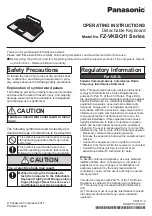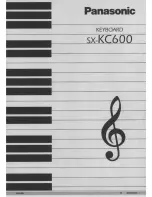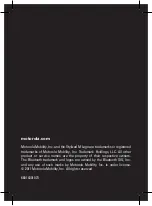
20
23.
Knobs (1–8):
Turn these knobs left/right to perform their assigned controls. When operating with a
DAW, the assigned controls will be predetermined. When operating with a preset
or the
User
DAW
selected, the controls can be edited.
Hold
SHIFT
while turning
Knobs 1–4
to edit arpeggiator settings.
Hold
SHIFT
and
Pads 9 – 11
to change the knob functionality in a DAW. Please note, this is not
available in all DAWs.
Important:
Both the
Faders
and
Knobs
are enabled with “soft takeover.” This means that if you switch
banks, a Fader or knob will not work until it is positioned at the current value of the newly selected
software control. For example, if you move
Fader 1
in Bank 1 and then switch to Bank 2, physical
Fader 1
will not affect software Fader 10 until the physical Fader is positioned at the current value of
software Fader 10. This feature allows you to make changes in one bank and then switch banks without
making unwanted changes to the new bank’s controls. The
Display
will show a checkered value meter
if a
Fader
or
Knob
needs to be moved before it can “take over” its assigned control.
Important:
In Avid Pro Tools, stereo tracks have two panning controls: left and right. Press the
SHIFT
button to switch the knobs between the left channel and right channel. If the pan controls aren't moving
on a mono track, press the
SHIFT
button to change pan knob back to controlling the pan control
normally.
24.
Mode Button (with LEDs):
Press the
Mode
Button
to activate one of the secondary Modes for the
Function Buttons
. When the keyboard is set to operate in DAW Mode, the available secondary
Modes
for the
Function Buttons
are
Rec, Select, Mute,
and
Solo
; in these Modes, the buttons perform
predetermined DAW channel Record Arm, Track Select, Mute, and Solo functions. When the keyboard
is set to operate in Preset Mode, the available secondary Mode for the
Function Buttons
is
MIDI
, in
which the buttons perform MIDI controls that are predetermined in one of the custom presets.
The LEDs to the right of the
Mode Button
indicate which Mode the
Function Buttons
are in.
Hold
SHIFT
and press the
Mode
Button
to access the keyboard’s Global Settings menu.
25.
Function Buttons (1–8):
When the
Function Buttons
are set to their primary Mode, they will control
the keyboard’s internal functions, as described below:
ARP Button:
Press this button to activate the arpeggiator. Hold
SHIFT
and press this button to edit
the arpeggiator’s settings.
Latch Button:
Press this button to toggle the arpeggiator between momentary and latch Mode.
Chord Button:
Press this button to activate Chord Mode. Hold
SHIFT
and press this button to edit
the Chord Mode settings.
Scale Button:
Press this button to activate Scale Mode. Hold
SHIFT
and press this button to edit
the Scale Mode settings.
1/4–1/32T (Time Division Buttons):
Use these buttons to select the keyboard’s time division setting
for the note repeat and arpeggiator functions. Each press of one of these buttons alternates between
the standard timing listed above the button and the triplet timing listed (beneath the button). A solid
red LED shows that a standard timing is selected, while a flashing LED shows that a triplet timing is
selected.
7
10
11 12 13
14 15 16
17
18
19
20
21
22
23
24
25
5 6
8
9
















































